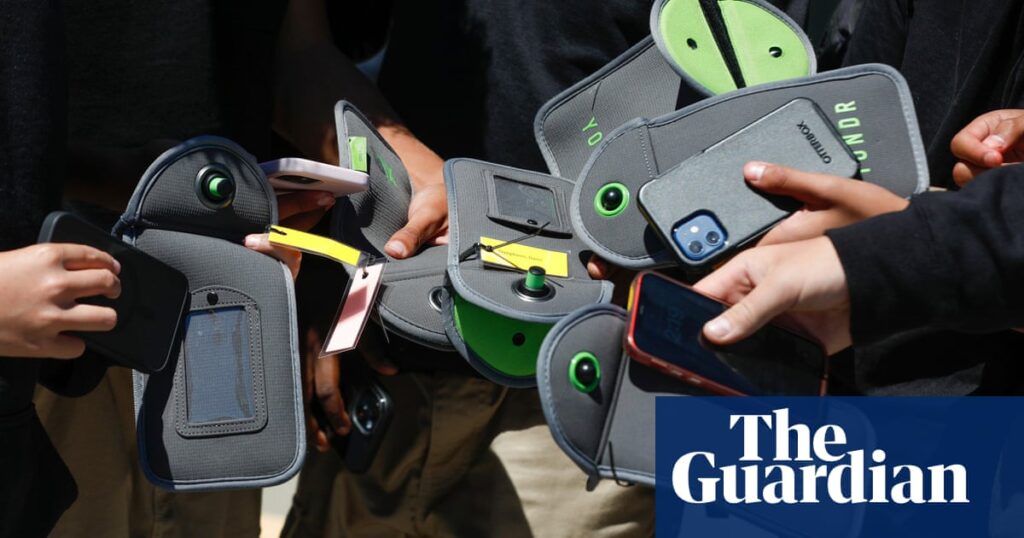School districts in California will have to create rules restricting student smartphone use under a new law that the state’s Democratic governor, Gavin Newsom, signed on Monday.
The law requires districts to pass rules by 1 July 2026 to limit or ban students from using smartphones on campus or while they are under the supervision of school staff. Districts will have to update their policies every five years after that.
The legislation makes California the latest state to try to curb student phone access in an effort to minimize distractions in the classroom and address the mental health impacts of social media on children.
“This new law will help students focus on academics, social development and the world in front of them, not their screens, when they’re in school,” Newsom said in a statement.
Florida, Louisiana, Indiana and several other states have passed laws aimed at restricting student phone use at school. New York’s governor, Kathy Hochul, said in May that she would support banning smartphones in the state’s schools. The Los Angeles unified school district, the second-largest in the US, voted to ban student phone use during the school day beginning in January.
Critics of phone restriction policies say the burden should not fall on teachers to enforce them. Others worry the rules will make it harder for students to seek help if there is an emergency or argue that decisions on phone bans should be left up to individual districts or schools.
“We support those districts that have already acted independently to implement restrictions,” said Troy Flint, a spokesperson for the California School Boards Association. “We simply oppose the mandate.”
The move comes after Newsom signed a law in 2019 authorizing school districts to restrict student phone access. In June, he announced plans to take on the issue again after the US surgeon general called on Congress to require warning labels on social media platforms about their effects on young people. The governor then sent letters to districts last month, urging them to limit student device use on campus.
California assembly member Josh Hoover, a Republican representing Folsom, introduced the bill with a bipartisan group of lawmakers who are also parents.
Phones are restricted where Hoover’s children – ages 15, 12 and 10 – attend school. Many of the students don’t always like the policy, which is in part a reflection of how addictive phones can be, he said.
“I think overall they understand why it’s important, why it helps them focus better on their classes and why it actually helps them have better social interaction with their peers face to face when they’re at school,” he said.
Before student cellphone use was banned during the school day at Sutter middle school in Folsom, students had been seen recording fights, filming TikTok challenges and spending lunchtime looking at online content, principal Tarik McFall said. The rule has “totally changed the culture” of the school so that students spend more time talking to one another, he said.
“To have them put away, to have them power off and that be a practice, it has been a great thing,” McFall said.
Teachers have reported seeing students more engaged since the Santa Barbara unified school district began fully implementing a ban on student phone use in class during the 2023-24 school year, assistant superintendent ShaKenya Edison said.
Some parents have raised concerns that school cellphone bans could cut them off from their children if there is an emergency. Those fears were highlighted after a shooting at a Georgia high school left four dead and nine injured this month.
The 2019 law authorizing districts to restrict student phone access makes exceptions for emergencies, and the new law doesn’t change that. Some proponents of school phone restrictions say it’s better to have phones off in an active shooter situation, so that they don’t ring and reveal a student’s location.
